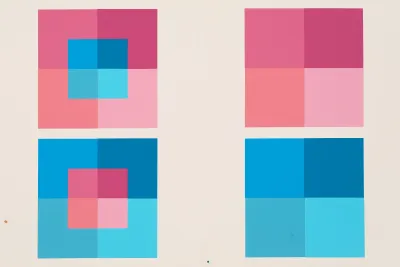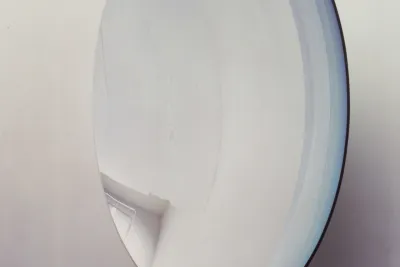Joseph Albers, Interaction of Color, 1963. Image courtesy of Bukokskis.
Josef Albers: Interaction of Color

“In visual perception, a color is almost never seen as it really is — as it physically is. This fact makes color the most relative medium in art.”
— Josef Albers
On view in The Dean’s Gallery is a selection of thirty-two color plates from Josef Albers’ Interaction of Color, which was originally published in 1963 as an experimental guide and teaching aid for artists, instructors, and students. The plates are not only works of art, but practical exercises that use color deception (illusion) to demonstrate the relativity and instability of color. The entire set of plates and full accompanying texts of Interaction of Color may be explored on the computer at the front of the gallery.
Josef Albers (1888-1976) was one of the most influential teaching artists and color theorists of the 20th century. He was a master of Germany’s Bauhaus group from 1925 until the Nazis closed it in 1933. At that time, he came to the United States, where he taught at the prestigious Black Mountain College until 1950, when he joined the Yale University faculty as Chairman of the Department of Design. The recipient of numerous awards and honorary degrees, Albers was elected to the National Institute of Arts and Letters in 1968.
All images are protected by copyright law and thus cannot be reproduced or altered without the expressed, written permission of the artists.


